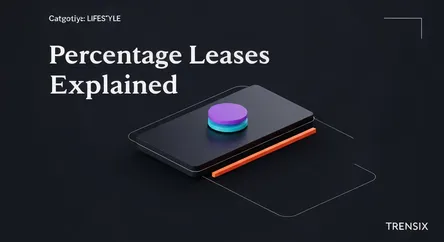Lifestyle
Percentage Leases Explained

Discover what a percentage lease is in commercial real estate. Learn how this rental model ties rent to a tenant's sales, benefiting both parties.
What is it?
A percentage lease is a type of commercial lease, common in retail, where the tenant pays a base rent plus a percentage of gross sales over a certain threshold (the "breakpoint"). This model directly links the landlord's income to the tenant's business success. For example, a retailer might pay $2,000 per month in base rent, plus 5% of all sales that exceed $50,000 in a given month. It's a structure that aligns the financial interests of both the property owner and the business operating within it, creating a shared-risk, shared-reward scenario.
Why is it trending?
In a volatile retail environment, the percentage lease offers a flexible, partnership-style arrangement. It incentivizes landlords to maintain and market their properties effectively, as higher tenant sales translate to higher rental income for them. For tenants, particularly new or seasonal businesses, it offers a lower fixed financial risk with a more manageable base rent. This adaptive model is popular because it allows both parties to navigate economic fluctuations and the challenges of e-commerce better than a rigid, fixed-rent agreement, fostering a more collaborative landlord-tenant dynamic.
How does it affect people?
For business owners, this lease lowers the upfront financial burden but requires transparent sales reporting and can lead to higher costs during peak seasons. For property owners, it provides a stable base income with significant upside potential, directly rewarding them for creating a thriving retail environment. For consumers, this often results in more vibrant and well-managed shopping centers. Because landlords are invested in their tenants' success, they are more likely to improve property aesthetics, security, and marketing, ultimately enhancing the overall shopping experience.